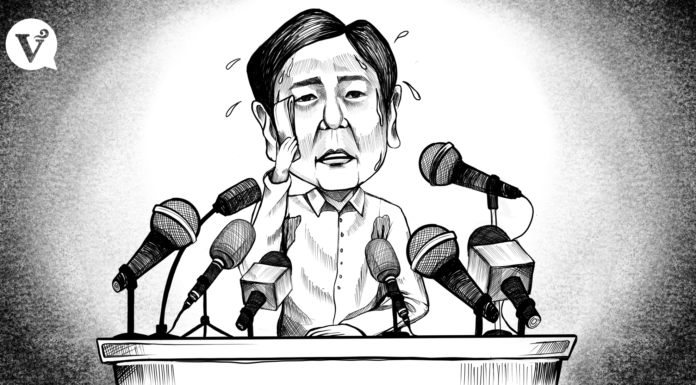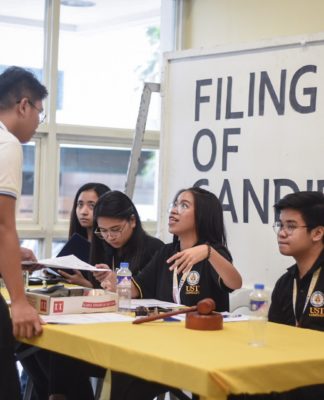
HERE’S good news to start the new academic year on a positive note – our beloved University clinched the 101st spot in the 2010 listing of Asia’s Top 200 Universities by the London-based Times Higher Education as gathered by the consultancy firm Quacquarelli Symonds (THE-QS).
Coming from a dismal 144th placing last year, UST’s new ranking is a testament to how much it has improved in such a short period of time. Currently, UST is now perched comfortably in the third spot among the four Philippine universities that often place in the list, overtaking De La Salle University-Manila (at 106), but still lagging behind Ateneo de Manila and the University of the Philippines (UP), at 58 and 78, respectively.
The improved ranking kicks off UST’s Quadricentennial celebration on a high note, and it may spark a trend wherein the University can continue to develop its programs so as to rise higher yet in the prestigious list. Most of all, it serves as an affirmation to the new batch of Thomasian freshmen that the University they have chosen is globally-competitive and competent, as attested by the THE-QS survey.
But UST should not also miss out on the survey’s revealing findings, which must serve as a wake-up call to UST as well as a reminder for it not to be too trusting with the reliability of the THE-QS.
In the first place in the area of life sciences, UST’s obvious specialty and edge among the others, it is way behind. It is in 69th place, behind UP (32nd), Ateneo (38th) and La Salle (84th).
In arts and humanities, UST placed far worse. It took the 69th place, fourth after La Salle (54), UP (16) and Ateneo (14). In some subjects, UST even failed to place at all, as in IT and Engineering, and in Natural Sciences.
How could a university that constantly dominates the board exams in these subjects be beaten by other schools that can’t even match the number of science-related courses offered by UST? The mere fact that the University produces top-notch graduates who do very well in board exams should be telling enough of the high-quality of education UST offers in such programs? So what went wrong?
It would seem that UST’s Waterloo lies in the academic peer review criterion, which made up 30% of the weight. Here, UST was given the 90th place, the last among the “big four.” This criterion refers to how academics all over perceive the researches within the university. But this was checked by another criterion where UST made its highest mark – researchers and citations. Here, UST was 8th overall, with a score of 98.8.
In short, despite UST having good programs in the sciences, despite having a better research regime, it is weighed down by its academic reputation as a result of low peer acceptance. In the past year, this was the Father Rector’s explanation to the low ranking of UST in the THE-QS survey: he said that the University does not engage in self-promotion.
But given that the THE-QS list is used by students, both international and local, to determine their choice of what college to apply for, isn’t it about time for Asia’s oldest university to indulge in a little self-promotion, especially on its 400th anniversary?
Surely there is reason to do so, given the prestigious history of the university and its alumni. In fact, this promotion should not be seen as arrogance or ego-booster, but rather as a means to advertise good quality education among young people wishing to take up higher education.
But marketing and advertising can’t do the trick alone. The low grade in the humanities is shocking inasmuch as UST has produced National Artists, top-notch writers and humanists of the land. In fact, the credibility of the survey suffers in this area, since how could UST–with its top literature, journalism, and philosophy programs, its Conservatory of Music, and its fine arts school that pioneered modern art in the Philippines–lag behind schools that hardly offer them?
But the poor score may be a wake-up call since humanities has been on a retreat in UST since the abolition of the UST creative writing and intercultural centers, the firing of several young fine arts faculty over– of all things!–haircut and dress code, and, as the Varsitarian Special Reports article in the last issue reveals, by the misguided and ultimately stupid policy of some science-based colleges in UST of replacing literature and humanities subjects with technical writing courses.
The listing should be taken with a grain of salt. While questioning the criteria and how they have been applied, some of them questionably, admittedly, UST should look at the listing as a way of checking how it fares in the bigger picture and what areas to work on to be globally competitive. No matter its perceived strengths, UST cannot rest on its laurels. At the least, there is still some room for improvement, even when one is 399 years sold.















And you never even bothered to be curious how the leading research university – UP, was overtaken by your beloved school in the research criterion? Do you honestly believe that your school actually placed 8th overall among asian universities in this specific category?
Duh!
This is UST’s student publication. It cares about UST, not UP or any other university. Another bovine reasoning!
Ang mga inggit sa UST, talagang nagbabasa pa ng Varsi! Hahahaha! Nakakatawa kayo na nakakaawa. Sobra ang pagka insecure nyo sa Pinagpalang Pamantasan! Kung talagang walang kwenta para sa inyo ang UST, bakit basa pa kayo ng basa about it? Bawas bawasan ang inggit!
It is very sad that comments against UST or any other school for that matter gets to be shown in the internet. I find the people who say terrible things in the internet pitiful. Sana walang ganyang mga bastosan because it reflects back on the student or person. Nobody wants to be labelled or known as bastos, right? Perhaps, comments that inflame hurts and result to bad blood or prejudices should be screened out especially here which is the school publication of UST which should also deserve respect if only for the fact that just like any school, it merely aims to produce capable, and humane graduates as its contribution to our country’s peace and progress. Tama na yang mga pambabastos whether hurled to UST or to others. Let’s just all live in peace and just do our respective duties for the good of society.